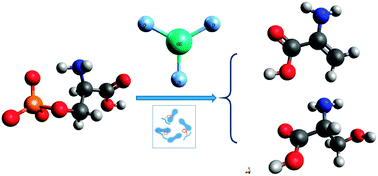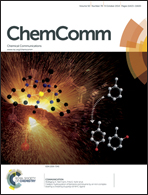GdF3 as a promising phosphopeptide affinity probe and dephospho-labelling medium: experiments and theoretical explanation†
Abstract
Bone-like GdF3 was synthesized and applied for phosphopeptide enrichment for the first time. As a new kind of efficient phosphopeptide affinity probe, GdF3 exhibits high efficiency in the mediation of the dephosphorylation reaction. In addition, DFT calculations were introduced to theoretically explain the unique property of GdF3 compared to GdPO4, which is promising and can be potentially significant in protein phosphorylation research.



 Please wait while we load your content...
Please wait while we load your content...